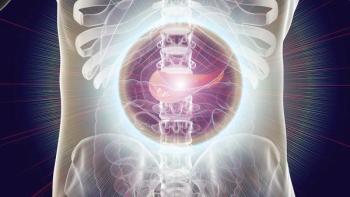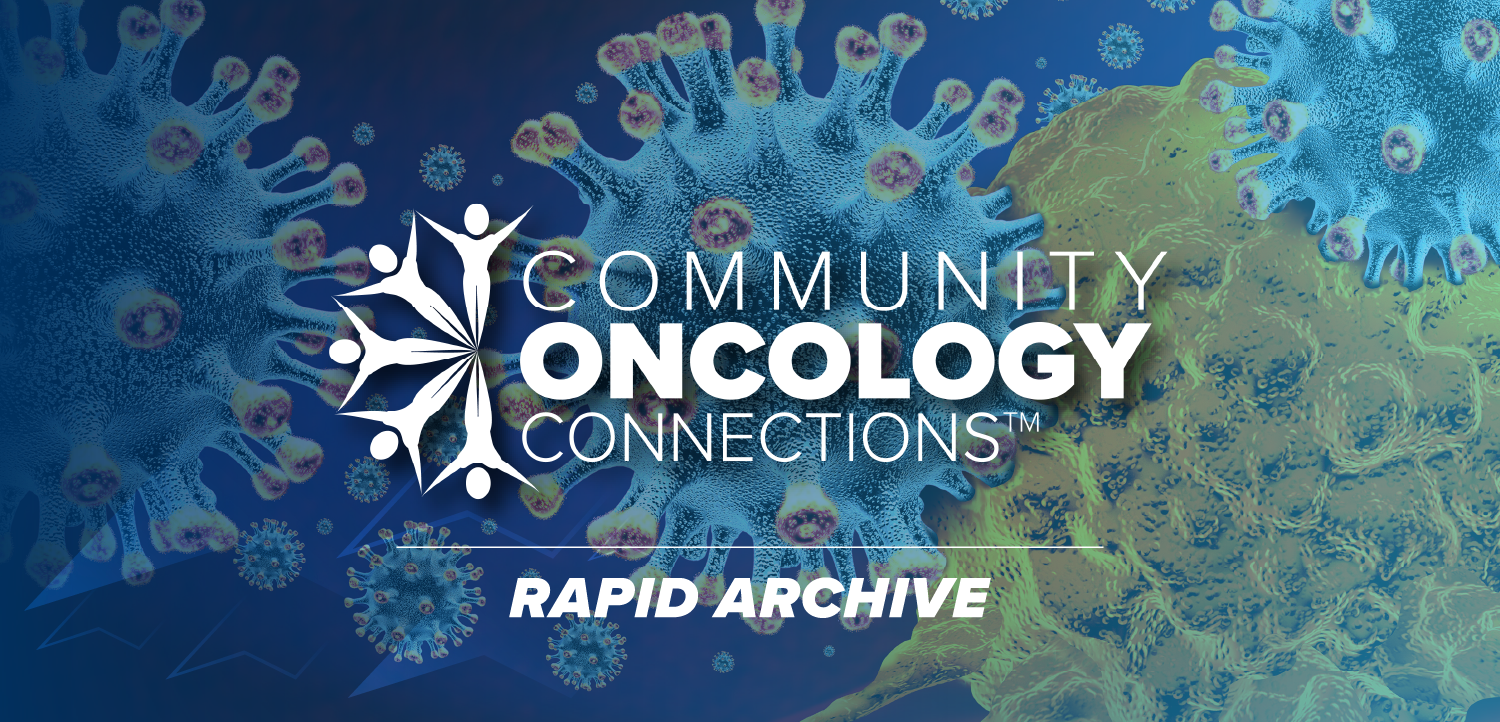
Oncology NEWS International
- Oncology NEWS International Vol 4 No 12
- Volume 4
- Issue 12
Risk of GI Cancer May Increase After Hodgkin's Disease Treatment
MIAMI BEACH--Patients treated for Hodgkin's disease are at moderately increased risk of developing secondary gastrointestinal (GI) cancer, Sandra H. Birdwell, MD, said at the American Society for Therapeutic Radiology and Oncol-ogy (ASTRO) meeting.
MIAMI BEACH--Patients treated for Hodgkin's disease are at moderatelyincreased risk of developing secondary gastrointestinal (GI) cancer,Sandra H. Birdwell, MD, said at the American Society for TherapeuticRadiology and Oncol-ogy (ASTRO) meeting.
Dr. Birdwell and her colleagues at Stanford University Schoolof Medicine, where she is a resident in radiation oncol-ogy, identifiedcases of GI cancer from the records of 2,441 patients treatedfor Hodgkin's disease between 1961 and 1994. Patients were followedfor a mean of 11 years after treatment ended.
The study was undertaken because of concern about the increasedrate of subsequent illness in Hodgkin's survivors. "Whileroughly 85% of Hodgkin's patients can be expected to be curedof this neoplasm, survivors are at increased risk of developingseveral health problems as a result of Hodgkin's disease or itstreatment," Dr. Birdwell said.
In fact, the development of other cancers has been the major factorcontributing to excess mortality in this population, she said.An increased risk of breast cancer, lung cancer, and leukemiahas been shown in previous studies, but no study had focused exclusivelyon the incidence of subsequent GI cancer in Hodgkin's survivors.
Overall, 25 patients in the Stanford series were found to havedeveloped invasive GI cancer, Dr. Birdwell said, indicating thatHodgkin's patients were 2.5 times as likely to develop GI canceras persons without Hodgkin's disease.
The risk of a second cancer was significantly increased for cancersof the stomach, small intestine, and pancreas. By contrast, therewas no appreciable increase in the risk of a subsequent cancerin the esophagus or colorectum.
The data also showed that exposure to combined modality therapyresulted in a significant increase in GI cancer risk, while noincreased risk was observed after treatment with radiotherapyalone or chemotherapy alone. However, few patients in this seriesreceived chemotherapy alone.
The highest risk for GI cancer was associated with younger ageat the time of treatment, and no increased risk was seen in patientswho were older than age 45 at the time of treatment. The excessrisk was evident within 10 years after treatment, was stable between10 and 20 years, and substantially increased after 20 years.
Dr. Birdwell pointed out that this latency of risk expressiondid not depend on patients' reaching an age when GI tumors becomeprevalent, because the risk was greatest among patients treatedat a young age whose tumors arose before the age when GI tumorsare most common.
Dr. Birdwell said her results suggest that it may be helpful toeducate patients with Hodgkin's disease about potential problemsafter therapy and provide a comprehensive evaluation of GI signsand symptoms during routine follow-up.
"We emphasize to patients--particularly those who were treatedfor Hodg-kin's 20 years earlier--that they report to us any symptoms,such as nausea, vomiting, abdominal pain, blood in their stools,abnormal bowel movements, and constipation and diarrhea, thatmay represent early GI cancer," she said.
Articles in this issue
almost 30 years ago
Confusion Abounds Over Breast Cancer Risk Factorsalmost 30 years ago
Mislocation of BRCA1 Gene Linked to Nonfamilial Breast Canceralmost 30 years ago
Regular Aspirin Use May Lower Breast Cancer Riskalmost 30 years ago
Study Probes How Aspirin Decreases Prostaglandin Levelsalmost 30 years ago
Scholarships Offered For Palliative Carealmost 30 years ago
Rhône-Poulenc Rorer Acquires Applied Immune Sciencesalmost 30 years ago
National Breast Cancer Month Spotlights Awareness Effortsalmost 30 years ago
Long-term Aspirin Use Reduces Colon Cancer Risk, Study Showsalmost 30 years ago
Panel Recommends FDA Approval of First Protease Inhibitoralmost 30 years ago
FDA Improves Drug Approval TimesNewsletter
Stay up to date on recent advances in the multidisciplinary approach to cancer.






















































































